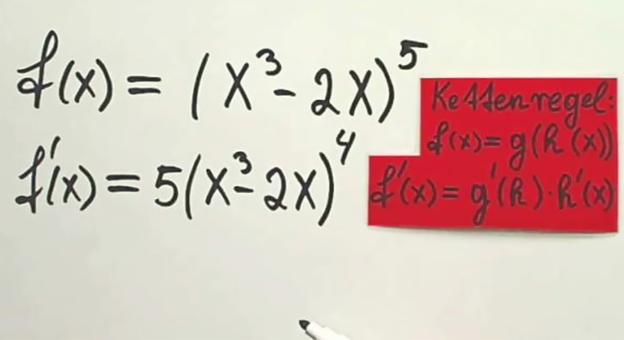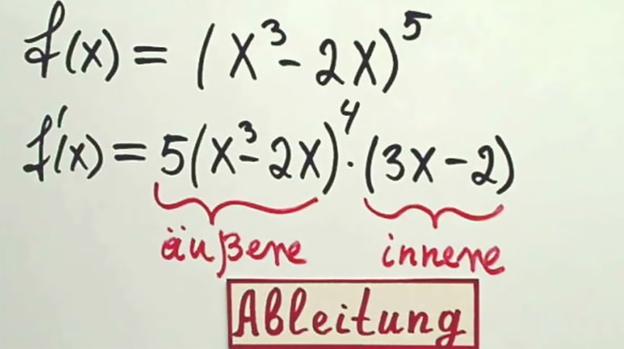VIDEO: Deriving the root x with the chain rule
This is how derivatives of polynomials work
Before you get into the derivation of the root x, look at the derivation of a normal polynomial:
- A function of the form f (x) = a1 xn + a2 xn-1 +... + anx0 is always derived according to the rule that the respective exponent together with the factor that was already before of the respective variable, multiplied by the variable whose exponent is reduced by 1 will. Certainly very few have understood this sentence.
- So you have to derive the first summand n times a1 with xn-1multiply and then (n-1) by a2 and xn-2 until you an x-1where the last expression is omitted because it results in zero.
- Specifically, this means: If f (x) = 5 x6- 2 x3 + 7, the derivative is f '(X) = 6.5.x6-1-2.3.x3-1+0.7.x0-1. Note: 7 = 7 x0 and not all possible exponents have to appear. x5, x4, x2 and x do not appear in the function. If you calculate the example, the result is: f '(x) = 30x5-6x2.
- Also, you need to remember that a root is nothing more than a fractional exponent. If f (x) = root x, it means that f (x) = x 1/2 is. The derivative is therefore f '(X) = 1/2 x1/2-1= 1/2 x-1/2. Since it is a negative exponent, you can also write this as a fraction that has a 1 in the numerator and 2 times x in the denominator1/2 respectively. Root x.
Derive 2 by x - this is how it works with fractional-rational functions
If you want to derive the function "2 by x", you can do this with a little ...
So you now also know how to derive a root. It works like other polynomials, except that you use fractions as exponents. Third root x is then x1/3 and 5. Root x3 is x3/5.
The chain rule initially without a root x

If instead of a polynomial you have an arithmetic expression, you have to apply the chain rule. To do this, proceed as follows:
- f (x) = (x3-2x)5: Remember that you have a function f (a) = a5, simply to f '(a) = 5 a4 can derive.
- So if you have x3-2x as a, you can derive 5 (x3-2x). But that is not the derivation with respect to x, but the one with respect to a. If you derive the function with respect to x, you still have to take the inner derivative and this would be the derivative of x3-2x so 3x2-2.
- According to the chain rule, they must f (x) = (x3-2x)5 first after the bracket (considered as a in the example) and then derive according to x. You get f '(x) = 5 (x3-2x)4(3x2-2). So you multiply the outer derivative by the inner one.
Now it goes on to derive roots
There are two ways how root can occur in the context: f (x) is the root (x3-2x) or f (x) is (root x + 3)3. So the term is either under a root or there is a root in the term, both are possible.
- Write the Functions consequently only with exponents, so the root of the term (root (x3-2x) to f (x) = (x3-2x)1/2 (respectively. in the other case f (x) = (x1/2+3)3)
- Form the outer derivative 1/2 (x3-2x)-1/2 (respectively. 3 (x1/2+3)2 and the inner derivative: (3x2-2) (or 1/2 x-1/2).
- Multiply the outer and inner derivatives f (x) = (x3-2x)1/2> f '(x) = 1/2 (x3-2x)-1/2(3x2-2) or f (x) = (x1/2+3)3 > f '(x) = 3 (x1/2+3) (1/2 x-1/2) You can then write these functions with roots again.



